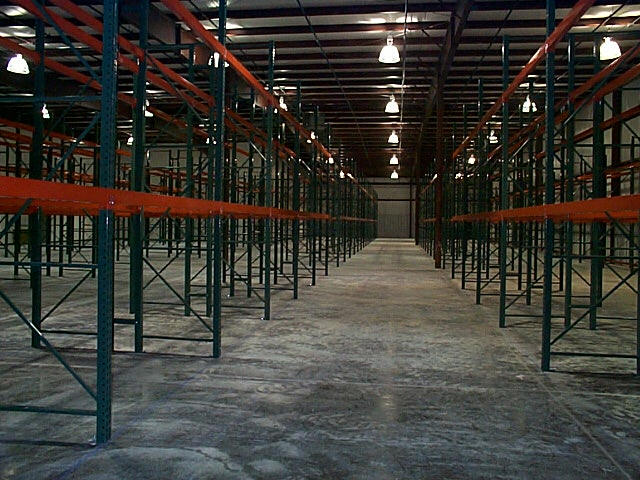Pallet Rack Purchasing Guidelines
Helpful information from www.SteelShelving-USA.com to make sure the pallet rack you purchase meets your storage needs.
Selective Pallet Rack Purchasing Guidelines
Selecting
the correct pallet rack type, size and capacity is essential for safely
storing your inventory. Knowing a few details on selective rack design
will help you make the right choice and can even save you money in the
long run. Considering the details ahead of time can allow you to
purchase wisely and avoid ordering pallet rack components that may not
meet your needs. It will also allow you to know exactly what pallet rack
components to look for if you decide to order from our
Quick Ship Pallet Rack online.
Here are the questions we always ask when customers contact us for their rack needs.
(It may be helpful to print this section out so you can fill it out later)
1)What are your typical pallet dimensions for the products you plan to store? (L x W x H)
2)What is the maximum weight for the heaviest pallet you plan on storing on the rack?
3)How tall would you like the uprights to be? (Make sure of your forklift max lifting height)
4)How deep would you like the uprights to be? (42" is recommended for standard 48" deep pallets)
5)How wide would you like the horizontal beams to be? (96" is typical, stores 2 standard 42" wide pallets)
6)How many beam levels are required in each bay of rack?
7)Do you need wire decking?
8)How many Starter and Add-On bays of rack are required?
The
components required for your pallet rack storage system are directly
related to your specific storage space and how the racks are to be
configured within your floor plan. The number of Starter and Add-On
units will determine the number of uprights you required, and obviously
the number of beam levels per unit will determine the quantity of beams
and wire decks.
(See illustration of Pallet Rack Starters and Add-Ons)
Pallet rack uprights
are rated based on the distance between the beam levels (how tall your
pallet is). Lighter duty uprights typically have 3"x1-5/8"vertical
columns while heavier duty uprights will have 3"x3"columns. Most upright
capacities are rated based on a 48" beam spacing, so the longer the
vertical distance between beam levels, the lower the capacity rating
becomes.
If your loads require more than 48" clearance, make sure you contact us to ensure the upright meets your capacity requirements.
Pallet rack beams
are rated as a pair since two beams are required per shelf level. Most
customers store their heaviest pallets on the floor and put the first
beam level at the height required for clearance of that first pallet. In
some warehouse applications such as food storage that require off the
floor storage, a beam level is used down low. Always choose the beam
capacity that covers your heaviest load for safety. However, the higher
the beam capacity the higher the price, so overkill can unnecessarily
add considerable cost to your storage equipment project.
Wire decks
are the most common and convenient method of decking for pallet rack.
Superior to solid decking for the open wire design, it allows for light
and fire sprinklers to pass through as well as more visibility when
loading pallets while also cutting down on accumulation of dust. Always
match your decking capacity to the beam capacity as close as possible.
Even with decking in place, you should always position your pallet so
the weight is resting equally on the front and back beams as the wire
decks are not designed for point loading.
